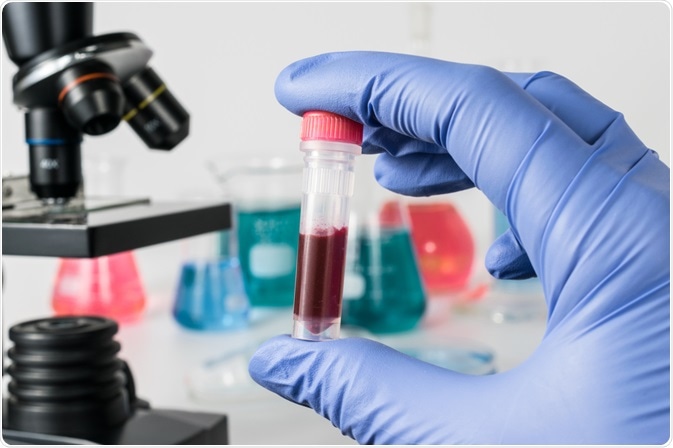A team from the University of Waterloo have developed a direct and fast means of quantifying drug levels in beverages and bodily fluids. Using a new analytical setup – dielectric barrier discharge (DBD), combined with high-resolution mass spectrometry – the team achieved an enhanced dynamic range of detection and lower limits of quantitation, compared to the prevailing techniques.
 Image Credit: Elpisterra / Shutterstock.com
Image Credit: Elpisterra / Shutterstock.com
Blood, urine, or hair samples are typical sources analyzed for the identification and quantification of illicit drugs. Alternative sources are beverages, particularly as they provide proof of illegal drug sale, intended misuse, or consumption.
By implementing solid-phase microextraction (SPME), both sample handling, volume, and extraction time are minimized; hence, the analysis of beverages are more attractive. Further, SMPE is amenable to a sampling/preconcentration step. The thin-film microextraction (TFME) form of SPME further offers a higher surface area and coating volume, which enhances extraction efficiency without compromising extraction kinetics.
The team used a polydimethylsiloxane (PDMS)-based TFME device loaded with divinylbenzene (DVB) particles as this enhanced efficiency of extraction compared to PDMS in isolation. Further, the subsequent thermal desorption step is compatible.
While previous studies interfaced PDMS/DVB TFME devices directly with mass spectrometry (MS) through an electron ionization (EI) source, the team used an alternative sample introduction system. This involves two thermal desorption stages with a liquid nitrogen cryofocusing step in between.
However, recent developments have seen the direct introduction of samples into spectrometers – circumventing the desorption stages. Namely, the dielectric barrier discharge ionization (DBDI) is a successful method used for the analysis of analytes collected by SPME devices.
DBD involves the ignition of a low-temperature plasma between two electrodes separated by a dielectric material. In their work, Mirabelli et al. used “active capillary” setup – a direct connection to the mass spectrometer, that prevents loss of ions formed. The teams DBDI source can also operate with different gases to ignite plasma and employs a soft-ionization technique, distinct from the hard ionization method such as EI.
In order to test the efficacy of this analytical technique, eight drugs were extracted from a variety of bodily l, fluids including urine, blood plasma, and beverages. Compared to the TDU-GC-EI-MS approach, the method was shown to have enhanced performance, with limits of detection between 3 and 100 pg mL−1 in urine, 10 and 30 pg mL−1 in vodka, and 30 and 300 pg mL−1 in blood plasma.
The magnitude of detection achieved was particularly notable as detection magnitudes for drug intoxication or therapeutic drug monitoring are typically in the ng mL−1 range
By direct coupling of a self-supported TFME device to a DBD ion source and high-res MS, the team achieved a convenient and quick analytical setup for drug quantification in beverages and biofluids. By using a TMFE device, the need for cryofocusing was eliminated as the gas flow rate was sufficiently high to allow for thermal desorption.
This SPME extraction/desorption strategy has the added advantage that sample carry-over is prevented as the SMPE thin film prevents desorption from the film.
Although the sensitivity of the method was positively evaluated, with extraction sensitivity and efficiency (figures were obtained with an extraction time of only 5 minutes), there were some drawbacks identified.
These included manual handling of the TMFE during extraction and desorption – as such, the team noted that improvements in the analytical workflow are necessary to improve both throughput and reproducibility. They hope that this will enable use in many analytical laboratories for research and routine quantification.
Going forward, the team suggests sampling of saliva or sweat – non-invasive sampling – owing to the thin property of the film used. The effect would be a simplified procedure and faster result readout, allowing more to be obtained. The latter point is particularly useful in the context of anti-doping, where athlete’s compliance with regulations must be determined as a matter of urgency.
Sources
Mirabelli, M. F. (2019). Fast screening of illicit drugs in beverages and biological fluids by direct coupling of thin film microextraction to dielectric barrier discharge ionization-mass spectrometry. Royal Society of Chemistry. DOI: 10.1039/C8AN02448K
Further Reading